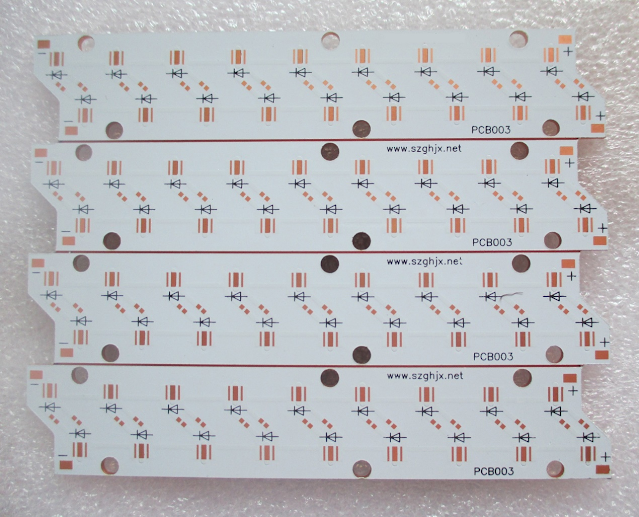Have A Brief Idea about Metal Core PCB
A metal core PCB,
or MCPCB, is a type of printed circuit board that uses a metal core as the base
material. MCPCBs are commonly used in high-power and high-temperature
applications, where traditional FR-4 PCBs would not be suitable.
The metal core of an MCPCB is
typically made of aluminum, copper, or a combination of the two. The metal core
provides several benefits over traditional FR-4 PCBs. First and foremost, the
metal core acts as a heat sink, dissipating heat away from the components on
the board. This is particularly important in high-power applications, where the
components can generate a significant amount of heat.
In addition to heat dissipation,
the metal core also provides excellent rigidity and durability. This makes
MCPCBs ideal for use in applications where the board may be subjected to high
levels of stress or vibration.
MCPCBs can be manufactured using a
variety of techniques, including etching, milling, and laser cutting. The metal
core is typically coated with a layer of dielectric material, which serves as
the insulation layer for the circuit traces. The circuit traces are then
applied using standard PCB manufacturing techniques.
One of the key design considerations
for metal core PCB is thermal management. The
thickness and material of the metal core, as well as the placement and size of
the vias, can all have a significant impact on the thermal performance of the
board. It is important to work with an experienced MCPCB manufacturer to ensure
that the board is designed and manufactured to meet the specific thermal
requirements of the application.
MCPCBs are commonly used in a
variety of high-power and high-temperature applications, including LED
lighting, power supplies, motor control, and automotive electronics. With their
excellent thermal performance and durability, MCPCBs are an ideal solution for
many challenging applications.
One important consideration when
designing an MCPCB is the choice of metal core material. Aluminum is a popular
choice due to its low cost and excellent thermal conductivity, but copper may
be more appropriate for applications that require high electrical conductivity
or electromagnetic shielding.
In addition to the metal core and dielectric material, metal core PCB may also include additional features such as surface-mount components, plated through-holes, and special coatings for corrosion resistance or improved thermal performance.+
Follow our Facebook and Twitter for more information about our product.




Comments
Post a Comment